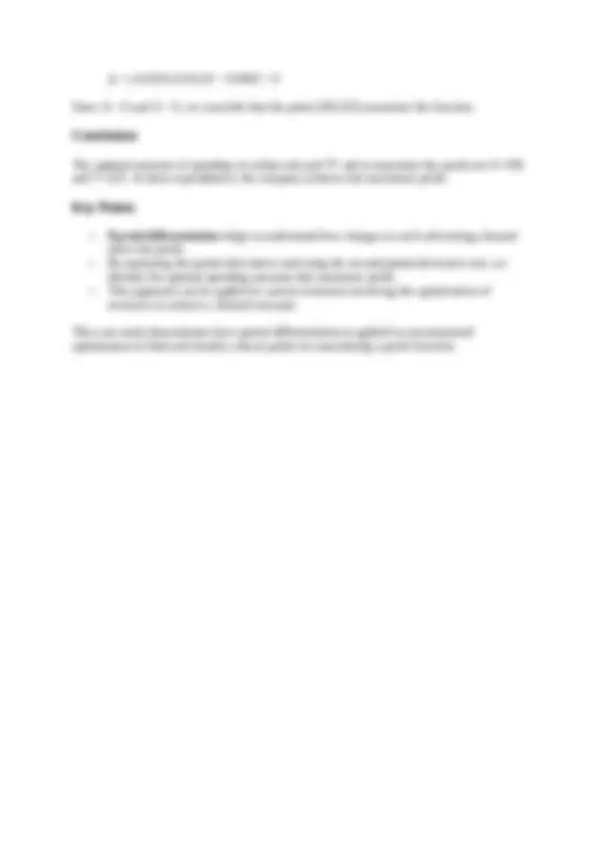



Study with the several resources on Docsity

Earn points by helping other students or get them with a premium plan


Prepare for your exams
Study with the several resources on Docsity

Earn points to download
Earn points by helping other students or get them with a premium plan
Community
Ask the community for help and clear up your study doubts
Discover the best universities in your country according to Docsity users
Free resources
Download our free guides on studying techniques, anxiety management strategies, and thesis advice from Docsity tutors
This is a excellent preparation for review
Typology: Assignments
1 / 2

This page cannot be seen from the preview
Don't miss anything!


A company sells a product and wants to maximize its profit by optimally allocating its advertising budget between two channels: online ads (O) and TV ads (T). The profit (P) generated from the product sales depends on the amount of money spent on these two advertising channels.
To find the optimal amounts of spending on online ads (O) and TV ads (T) that maximize the profit (P).
The profit function is given by: P(O,T)=20O0.5+30T0.5−O−T Here: 20O0.5^ represents the revenue generated from online ads. 30T0.5^ represents the revenue generated from TV ads. O and T are the expenditures on online and TV ads respectively. The terms −O and −T represent the costs associated with these expenditures.
To maximize the profit, we need to find the values of O and T that maximize the function P(O,T). This involves finding the critical points of P(O,T) and determining whether these points are maxima, minima, or saddle points.
Since Δ > 0 and A < 0, we conclude that the point (100,225) maximize the function.
The optimal amounts of spending on online ads and TV ads to maximize the profit are O= 100 and T=225. At these expenditures, the company achieves the maximum profit.
Partial differentiation helps us understand how changes in each advertising channel affect the profit. By analyzing the partial derivatives and using the second partial derivative test, we identify the optimal spending amounts that maximize profit. This approach can be applied to various scenarios involving the optimization of resources to achieve a desired outcome. This case study demonstrates how partial differentiation is applied in unconstrained optimization to find and classify critical points for maximizing a profit function.